Mastering Smartsheet Swimlanes for Project Success
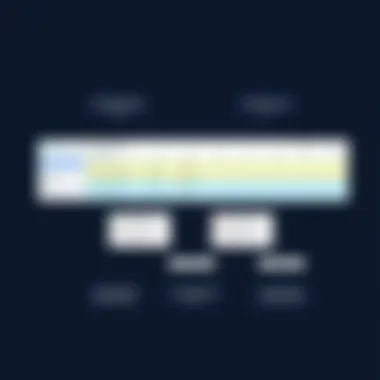
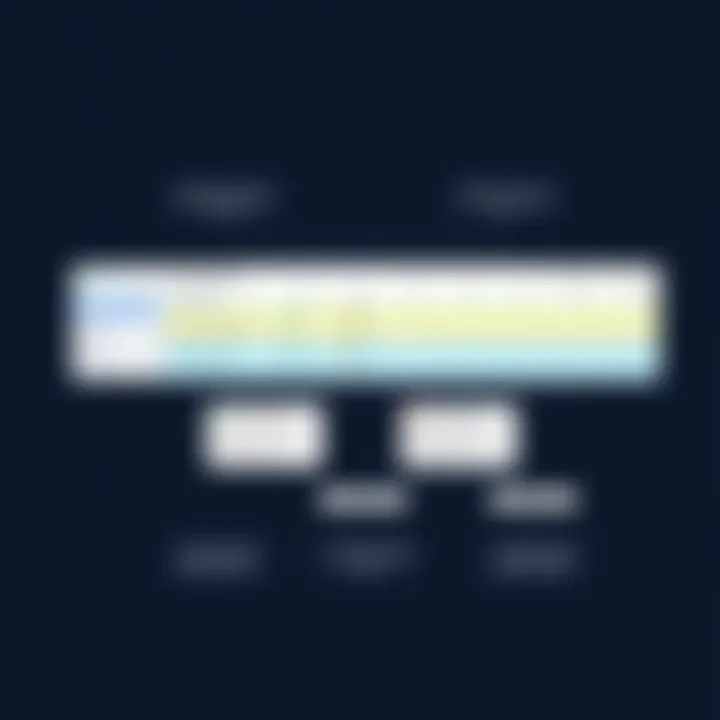
App Overview
Smartsheet is not just any run-of-the-mill project management tool; it's a powerhouse designed to make project organization seamless and efficient. At the heart of its capabilities lies the swimlane feature, a game-changing approach to visualizing tasks and workflows. Swimlanes allow users to categorize and manage multiple projects or teams in a single view, which can enhance clarity during project execution.
When diving into Smartsheet, the myriad features it offers become evident. The platform combines traditional project management elements with modern tools that facilitate collaboration and communication among team members. You can easily assign tasks, set deadlines, and track progress without losing sight of who is responsible for what. Furthermore, the ability to integrate with various other applications—like Google Drive and Microsoft Teams—greatly broadens its functionality. This cross-platform compatibility bridges gaps that often plague project management tools.
Key Functionalities and Benefits of the App
- Versatile Layouts: Users can switch between grid, card, and calendar views, making it easier to visualize data based on individual preferences.
- Real-Time Collaboration: Teams can edit projects simultaneously, ensuring everyone is on the same page.
- Automated Alerts and Reminders: Track deadlines and critical tasks without missing a beat through automated notifications.
- Customizable Dashboards: Visualize project statuses with charts and graphs that reflect real-time data, helping you make informed decisions faster.
- Reporting Tools: Generate comprehensive reports easily, which can be shared with stakeholders to keep them in the loop.
In essence, Smartsheet's swimlanes serve as a structural backbone that clarifies roles and responsibilities, enhances workflow efficiency, and fosters better communication.
Step-by-Step Walkthrough
Getting started with swimlanes in Smartsheet is straightforward. Here’s how to set them up:
- Open a New Sheet: Start with a blank sheet or choose an existing one where you wish to implement swimlanes.
- Activate Swimlanes: Go to the menu and select 'Insert', then 'Swimlane'. This creates a section where you can categorize tasks based on any given criteria like team, phase, or priority.
- Label Swimlanes: Name each swimlane according to its purpose, like 'Marketing', 'Development', or 'Testing'. This clarity helps everyone understand the layout.
- Add Tasks: Within each swimlane, start populating with tasks. Simply click and type to add your tasks, assigning them to the appropriate swimlane depending on the context.
- Adjust Settings: You can customize how swimlanes are arranged, whether vertically or horizontally, and modify their colors to visually distinguish them easily.
Once set up, the visual representation of tasks allows for quick assessment of who is doing what, reducing the confusion that can often muddy project outcomes.
Tips and Tricks
- Color Coding: Utilize colors to signify different project phases or priority levels within swimlanes. This simple strategy enhances visibility.
- Use Conditional Formatting: Set rules to automatically change cell appearances based on the status of tasks. For instance, tasks close to deadline can turn red.
- Utilize Comments: Encourage team collaboration by adding comments on particular tasks. This keeps discussions focused without losing context.
Smartsheet has hidden gems; for instance, the ability to create templates can save you time in future projects. Having a well-organized template with swimlanes helps in quickly laying out new projects.
Common Issues and Troubleshooting
Despite its advantages, users may run into a few hiccups. Here are common problems and their solutions:
Potential Issues
- Difficulty in Navigation: Some users find it challenging to find certain features after their initial setup.
- Overlapping Tasks: If not managed properly, tasks may appear cluttered within swimlanes.
Solutions
- Training Materials: Leveraging online tutorials and Elsmartsheet's comprehensive help resources can dramatically cut down the learning curve.
- Regular Clean-Ups: Schedule periodic reviews of your swimlanes to archive completed tasks, ensuring the workspace remains uncluttered, which promotes better focus.
Using a mix of proactive strategies and available resources can alleviate most frustrations users may encounter as they adapt to using swimlanes in Smartsheet.
App Comparison
When gauging Smartsheet against similar project management tools like Trello and Asana, several unique selling points emerge. While Trello offers a card-centric approach perfect for simple projects, Smartsheet’s full-fledged feature set makes it suitable for more complex project demands. Asana, though powerful in task tracking, often lacks the in-depth visual structuring that swimlanes provide.
In the end, the choice boils down to specific project requirements:
- For intricate projects needing refined control over task management, Smartsheet truly shines.
- For teams focused on visual task organization, Trello may be worthwhile.
- Conversely, Asana is ideal for those prioritizing streamlined task lists over visual clarity.
Foreword to Smartsheet Swimlanes
Swimlanes are a powerful feature within Smartsheet that help in structuring and visualizing workflows. They divide tasks or projects into distinct lanes, making it easier to track progress across various functions or teams. This clear presentation is particularly important in today’s fast-paced project environments, where understanding assignment pathways can mean the difference between a successful project launch and a missed deadline. By clearly outlining who is responsible for what and when, swimlanes eliminate confusion and enhance accountability.
Defining Swimlanes
In essence, swimlanes are horizontal or vertical divisions within a Smartsheet that categorize tasks based on teams, stages, or any other criteria deemed necessary. Each swimlane represents a specific entity—such as a department, project phase, or even an individual—allowing users to visualize the flow of tasks across the board.
The primary function of swimlanes is to clarify workflow. When teams can see which work belongs to whom, it minimizes overlaps and potential conflicts. Consider a marketing campaign where the creative team works on content while the analytics team tracks engagement metrics. By using swimlanes, both teams can simultaneously follow their tasks without stepping on each other's toes. Thus, clear ownership is established, and tasks progress more smoothly.
Historical Context of Swimlanes
Swimlanes didn't emerge out of thin air; they are part of a broader evolution in visual project management tools. Their origins can be traced back to process mapping techniques that sought to clarify roles and responsibilities in complex workflows.
Originally, swimlanes appeared in flowchart formats to help teams understand complicated processes visually. The practical adaptation of these concepts into digital tools like Smartsheet marks an important shift in project management. With the rise of agile methodologies, the need for quick adaptability and clear communication became even more pronounced. Swimlanes fit neatly into this need by offering a straightforward visual framework for teams to organize their work. Instead of grappling with confusing spreadsheets, teams can now leverage swimlanes to maintain clarity in their projects.
This historical backdrop not only informs how swimlanes are utilized in Smartsheet today but also underscores their significance in contemporary project management practices. As industries continue to evolve, tools like Smartsheet ensure that teams remain equipped to handle the fluid nature of project demands.
Benefits of Using Swimlanes in Smartsheet
Swimlanes, as a feature within Smartsheet, bring a wealth of advantages to project management that can significantly enhance the way teams operate. The efficiency of using swimlanes lies in their ability to visually organize tasks and responsibilities, making complex projects seem more manageable. In this section, we will explore the core benefits of utilizing swimlanes and reveal how they contribute to clearer communication and improved productivity.
Improved Clarity of Workflow


One of the most striking advantages of swimlanes is how they provide clarity in workflow. By segmenting tasks into distinct lanes according to categories such as team members, project stages, or task types, stakeholders can quickly see the status of each component of a project. Instead of sifting through a wall of text or a jumbled table, users can track the progress in a structured manner.
This clarity plays a critical role in pinpointing bottlenecks and delays. For instance, if a team member's lane is consistently full, it signals a potential issue that might require reallocation of resources or attention. Clear workflow helps everyone stay informed, which, in turn, promotes accountability among team members. In essence, swimlanes transform chaotic task lists into a well-organized roadmap to success.
Enhanced Team Collaboration
Collaboration can be a tricky business. Miscommunication and unclear responsibilities often lead to confusion and project delays. However, swimlanes mitigate these issues by making roles and responsibilities visually apparent. Each team member can easily see where they fit into the larger picture, reducing overlap and ensuring that efforts are not duplicated.
Moreover, with customization features, swimlanes can reflect varying collaboration styles. For instance, one could organize swimlanes based on departments or phases of a project. This allows teams working toward the same goal to collaborate more effectively. They can add comments, attach files, and track changes within their respective lanes, making interactions more seamless and informed. This boosted clarity leads to a harmonious workplace where collaboration thrives.
"Visual organization transforms confusion into clarity, bringing every project member along for the ride."
Facilitating Agile Project Management
In today’s fast-paced environment, agile project management is becoming increasingly essential. Swimlanes facilitate this dynamic approach by allowing projects to adapt smoothly to changes. Each lane can represent different iterations, ensuring that teams remain flexible and poised for rapid shifts in direction if necessary.
As tasks move through different stages, teams can easily adjust their strategies mid-project. This flexibility means that project managers can respond to feedback more quickly and take corrective actions without losing track of what's been done and what still needs attention. The ability to visually represent changes and progress helps teams apply agile methodologies more effectively, leading to improved results and higher customer satisfaction.
In summary, swimlanes in Smartsheet not only bring order to chaos but also foster communication and agile practices, making them an invaluable tool in the project management toolkit.
Configuring Swimlanes in Smartsheet
Configuring swimlanes in Smartsheet is a critical phase that shapes the overall effectiveness of project management within the platform. Swimlanes serve as graphical partitions that visually break down tasks and responsibilities among team members or processes. This not only aids in clarity but also enhances the flow of work, making sure everyone knows what’s what. When set up correctly, you create a roadmap that directs focus and accountability, allowing projects to roll along smoothly.
Understanding the importance of this configuration can’t be overstated. It’s not just about aesthetics; it’s about making sure that every team member is aligned with their tasks. Especially in larger projects, where multiple contributors are involved, the way swimlanes are configured can mean the difference between chaos and streamlined collaboration. Effective configuration should consider the specific needs of the project and adapt accordingly, making it crucial for project managers to thoughtfully plan how best to utilize swimlanes.
Setting Up Your Smartsheet Workspace
To begin configuring your swimlanes, you first need to set up your Smartsheet workspace properly. This lays the ground for effective project management. Start by creating a new sheet tailored to your project needs. Set clear goals that define the swimlane categories you’ll require. This could include phases of the project, team divisions, or even different types of tasks. For instance, if you’re managing a marketing campaign, your swimlanes might include planning, execution, and review. Setting this framework will provide you a solid base to build upon.
Creating Swimlanes
Creating swimlanes in your Smartsheet can be done with a few clicks. Once you've got your workspace set, navigate to the area where swimlanes can be added. Click on the designated section, select ‘Create Swimlane,’ and define the parameters you've set in your planning. Each swimlane can represent specific team roles, stages of tasks, or categories of work. Choose names and labels that resonate with your team, so the context is crystal clear. It’s also beneficial to arrange these swimlanes logically, as this will guide team members in understanding their workflow at a glance.
Customizing Swimlane Properties
Customizing the properties of your swimlanes is where you really tailor the experience to your project’s needs. This can significantly elevate the usability of your swimlanes within Smartsheet. Here, you’ll typically focus on three key aspects: Color Coding, Labels and Titles, and Size and Arrangement.
Color Coding
Color coding is an effective method of quickly conveying information about each swimlane. By assigning distinct colors, you can communicate statuses or priorities without needing to spell it out. For example, you could use red for tasks that are behind schedule and green for those on track. A key characteristic of color coding is its immediacy; it allows anyone glancing at the sheet to grasp the situation quickly. One benefit of this system is its ability to draw attention to critical areas, fostering prompt action in management. However, one downside is that it requires consistency. If colors change frequently or lack a clear legend, confusion may ensue.
Labels and Titles
Labels and titles give context to each swimlane, guiding viewers through the project landscape. Choose labels that precisely capture the nature of tasks presented. For instance, in an IT project, titles like "Development" or "Testing" can be very useful for clarity. This feature is valuable since it not only helps in organization but also serves to communicate roles and responsibilities transparently. A unique feature of this system is its adaptability; you can change labels as the project evolves. But bear in mind that vague labeling can lead to misunderstandings. So, clarity should be the name of the game.
Size and Arrangement
The size and arrangement of swimlanes matter significantly in providing structure. An imbalance, such as overwhelming one section while leaving another sparse, can disrupt workflow visibility. Customizing size lets you prioritize what’s essential; bigger lanes for crucial tasks can be more prominent, while less urgent items can take a back seat. An appealing layout tends to invite users to engage with the sheet effectively. A challenge here is to ensure proportional representation; too little lines for many tasks can create confusion.
All in all, configuring swimlanes in Smartsheet requires thought and strategy. Through proper setup, creation, and customization, you will able to transform your project into a well-oiled machine.
Utilizing Swimlanes for Different Project Types
The use of swimlanes can dramatically change how teams manage their workflows across various project types. Different projects come with unique challenges and requirements, thereby necessitating tailored approaches. This section will explore how swimlanes can be specifically leveraged for Agile projects, Kanban boards, and marketing campaigns. Each of these project types has critical characteristics, and understanding these can inform effective swimlane design.
Swimlanes for Agile Projects
Agile projects thrive on flexibility and iterative progress. Here, swimlanes become more than just a visual aid; they are crucial for tracking sprints and ensuring that tasks are aligned with project goals. For instance, a typical Agile team may use swimlanes to differentiate between various stages of a sprint: planning, in-progress, and review. By clearly marking these stages out, it helps team members know where to focus their efforts and understand the bigger picture.
- Visibility: With swimlanes, everyone can see the current status of the project at a glance, fostering transparency. This visibility aids in quicker decision-making.
- Ownership: Assigning specific lanes to team members or roles reinforces accountability. When developers can see which tasks are assigned to them at a glance, it reduces confusion.
- Collaborative Flow: Swimlanes provide a structured way to visualize dependencies between tasks, helping teams navigate overlaps and potential bottlenecks in their workflows.
In Agile methodologies, this kind of organization allows teams to remain nimble, pivoting quickly when issues arise, without losing sight of their ultimate goals.
Swimlanes for Kanban Boards
When it comes to Kanban boards, swimlanes take the concept of organization a step further. Not only do they divide tasks by status, but they can also categorize by priority, team member, or workflow type. In environments rich with projects that demand constant flow, the addition of swimlanes offers a robust solution to maintain order and efficiency.
Imagine a scenario where a team’s Kanban board is set up with lanes representing various priorities: high, medium, and low. This setup allows teams to focus on what needs immediate attention while still having sight of other ongoing tasks.
- Enhanced Clarity: Swimlanes enhance the Kanban method by allowing teams to immediately identify important tasks amidst a potentially chaotic board.
- Effective Workload Management: Teams can use swimlanes to balance workload amongst team members, ensuring no one is overwhelmed.
- Real-time Updates: In a fast-paced setting, real-time updates provided through swimlanes can facilitate better communication.
By leveraging swimlanes in Kanban boards, teams can achieve a finely tuned workflow that anticipates challenges and swiftly meet project milestones.
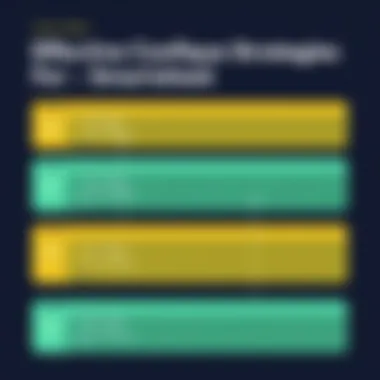
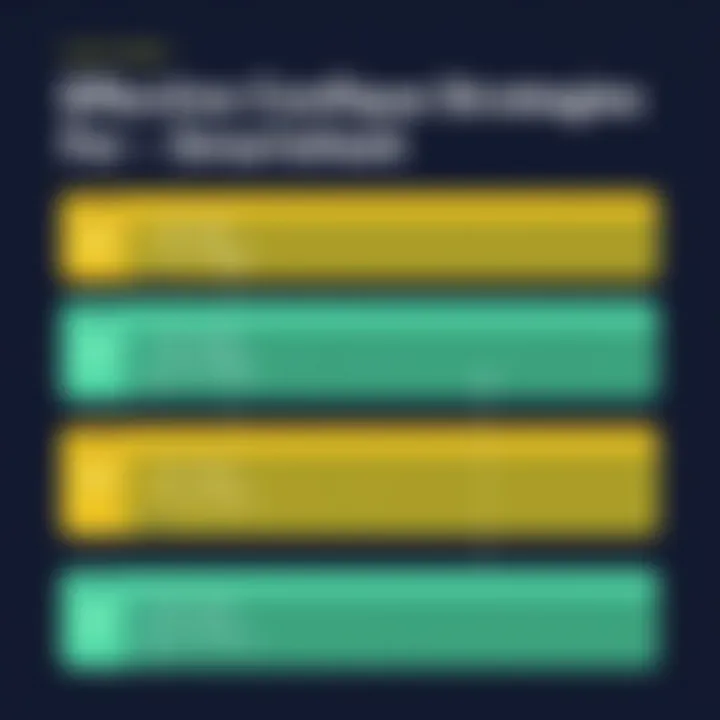
Swimlanes in Marketing Campaigns
Marketing campaigns often juggle multiple elements and stakeholders. Here, swimlanes can organize tasks not just by their status, but by campaign type, channel, or even targeted demographic. For example, a marketing team might use one swimlane for social media tasks, another for email campaigns, and yet another for content creation.
Utilizing swimlanes in this context provides several benefits:
- Prioritization of Strategies: By laying out campaigns in an organized manner, teams can prioritize approaches based on effectiveness.
- Coordination Among Teams: Marketing campaigns frequently involve cross-functional teams. Clear delineation helps streamline communications across departments.
- Performance Tracking: It becomes easier to analyze which strategies yield the best results when they are compartmentalized into swimlanes.
"Effective project management hinges upon clarity; swimlanes provide that clarity like a compass in dense fog."
For more on Agile methodology and Kanban techniques, you can explore resources at Wikipedia or Reddit.
By using these diverse approaches, teams can craft a strategy that is not only efficient but also agile enough to adapt to changing project landscapes.
Integrating Swimlanes with Other Tools
Integrating swimlanes with other tools can significantly elevate project management efficiencies. In the ever-evolving landscape of project management, it is crucial to streamline tasks and unify various functionalities. Smartsheet provides an effective platform where swimlanes enhance clarity, but their integration with tools like dashboards and reports can take project tracking to an even higher notch. Considering these integrations is vital not just for large teams, but also for individual users who aim to optimize their workflows.
Linking to Other Smartsheet Features
Dashboards
Dashboards in Smartsheet serve as visual representations of the project status. They pull in data from various sources, allowing for a centralized view that aids decision-making and quick assessments. One of the key characteristics of dashboards is their ability to present complex information in an easily digestible format. This enhances overall project management by fostering transparency among team members and stakeholders, allowing everyone to see where things stand at a glance.
A unique feature of dashboards is their capacity to link directly to specific swimlanes. For instance, by clicking on a chart that reflects a swimlane's progress, team members can dive deeper into the details associated with that particular lane. This integration reduces the time spent searching for information and increases focus on what matters most. However, complexities arise when trying to maintain a simplified visual layout, especially when dealing with numerous swimlanes and data points. A cluttered dashboard can sometimes obfuscate important details.
Reports
Reports in Smartsheet offer detailed insights into project data, helping teams track performance and identify trends. A pivotal aspect of reports is their ability to distill vast amounts of information into actionable insights. This functionality is particularly beneficial for project managers who need to stay on top of various elements.
The main characteristic of reports is their versatility. Users can customize the data included, allowing for the creation of tailored reports that focus on specific swimlanes. For example, a report can be generated that solely tracks timelines and deliverables from one distinct swimlane, thereby isolating key performance indices for concentrated evaluation. This functionality is crucial for making informed decisions swiftly. Yet, crafting these reports can require a significant investment of time, particularly for those new to Smartsheet.
Connecting with Third-Party Applications
Integrating swimlanes with third-party applications adds another layer of flexibility and functionality. By connecting with tools like Slack for communication or Google Drive for documentation, project teams can ensure that information flows more freely across platforms. This not only fosters an environment of enhanced collaboration but also mitigates the risk of information silos where critical updates could be overlooked. In modern project management, flexibility is key, and integrating swimlanes with various other applications allowed for seamless transitions and streamlined workflows.
By enhancing the synergy between Smartsheet and third-party tools, teams can significantly improve task delegation, project visibility, and overall productivity, paving the way for superior project outcomes. As a result, the importance of effectively integrating swimlanes with various applications cannot be overstated—it’s not just about working harder, but about working smarter.
Common Challenges and Solutions
Managing projects with Smartsheet swimlanes can often be a double-edged sword. While they offer a structured way to visualize workflows, they also come with unique challenges that can sometimes muddy the waters rather than clear them. This section addresses the common pitfalls one might encounter and the strategies to deal with those issues. Recognizing these hurdles is crucial—not just for optimizing workflow but also for ensuring team cohesion and effectiveness.
Overcomplexity in Swimlane Design
One of the first caveats users run into is the potential for overcomplexity in swimlane design. When team members go all out, piling on detailed connections and a multitude of swimlanes, the layout can quickly become a tangled mess. Rather than making things clearer, a convoluted design fosters confusion. Here are some steps you can take to keep your swimlanes straightforward:
- Limit Swimlanes: Too many swimlanes can overwhelm. Stick to essential categories that bring clarity.
- Simplified Titles: Use clear and concise titles that everyone can understand without needing a glossary. Avoid jargon that might leave someone scratching their head.
- Consistent Format: Maintain a uniform style for all swimlane elements. This might mean sticking to the same colors or layouts across the board.
- Periodic Reviews: Regularly revisit and refine your swimlanes. As projects evolve, it’s important to ensure that your design stays relevant.
By avoiding unnecessary complexity, teams can maintain focus and enhance efficiency, leading to improved project outcomes.
Maintaining Clarity in Large Projects
In larger projects, maintaining clarity becomes paramount. When teams are spread thin across multiple facets of a big project, it’s easy for swimlanes to become cluttered and less effective.
To tackle this issue, consider these strategies:
- Sub-Swimlanes: Sometimes, it’s better to break it down. If a project is large, sub-swimlanes can give a clearer picture of specific segments without overcrowding the main area. Think of it like nesting dolls.
- Role Assignment: Clearly assign responsibilities within each swimlane. This way, everyone knows what falls under their purview, reducing overlap and miscommunication.
- Regular Check-Ins: Schedule frequent meetings or updates to touch base on projects. This keeps everyone aligned and aware of developments, helping prevent misinterpretations.
- Visual Cues: Utilize visual signals for status updates—red for warnings, green for go-aheads. This aids in swift recognition of project health and needs.
Clarity does not just help the project manager; it trickles down to every team member, ensuring everyone is on the same page.
"A project well-planned is half-done; conversely, a poorly structured swimlane can lead to chaos in production."
In summary, while challenges like complexity and clarity are real concerns when working with Smartsheet swimlanes, they are manageable. A thoughtful approach, combined with regular reviews and collaborative practices, can help teams steer clear of potential pitfalls and harness the true power of swimlanes for project management.
Tips for Effective Swimlane Management
Managing swimlanes effectively demands ongoing attention and adaptability. It's like tending to a garden; without care, things can quickly get overgrown or unproductive. Swimlanes, while powerful tools for organizing workflows in Smartsheet, can also spiral into chaos if not maintained properly. Here, let’s explore essential tips to keep your swimlanes both effective and dynamic, ensuring they serve their primary purpose: enhancing project management and team collaboration.
Regular Updates and Maintenance
Regularly updating your swimlanes is crucial for keeping information relevant and accessible. Outdated data can cloud judgment and lead to miscommunication among team members. Think of swimlanes as a living document; they evolve as projects progress.
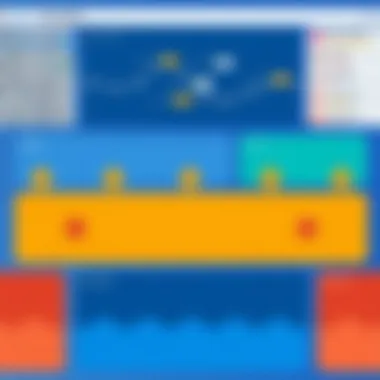
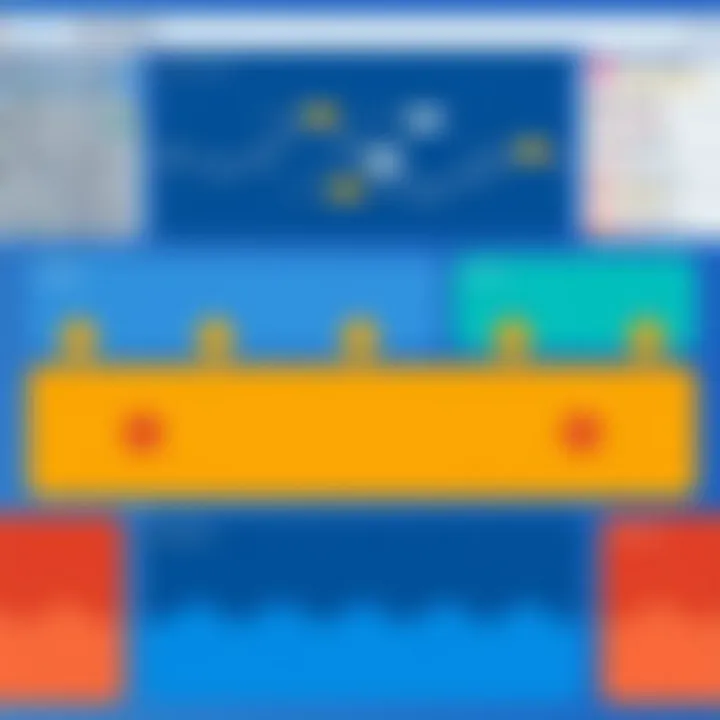
- Set a Schedule: Make it a part of your routine. Just like paying bills on time, designate specific intervals—weekly or bi-weekly—when you review and update swimlane content. This practice ensures that team members are always looking at the most current information.
- Automation Tools: Leverage Smartsheet’s built-in automation features. These can send reminders for due dates or updates, keeping your team in the loop without needing to chase them down individually. It’s a small trick that pays off big in ensuring accountability.
- Sync with Project Milestones: Align updates with key project milestones or tasks. If your team completes a major phase of a project, take a moment to revisit the swimlanes, updating relevant items to reflect the completed work and upcoming steps. This not only keeps things current but also provides a sense of accomplishment.
By keeping your swimlanes fresh, you enhance clarity and ensure all team members have access to the latest project developments. This clarity can directly impact efficiency—after all, when everyone’s on the same page, work flows more smoothly.
Soliciting Team Feedback
Feedback is gold in any collaborative environment, and swimlane management is no exception. Actively reaching out for team input can surface innovative ideas and improve processes. Here's how to make feedback a standard part of your swimlane strategy:
- Throw Open the Doors: Encourage openness. Create an environment where team members feel safe to express their thoughts on swimlane utility. This can be as simple as sending a follow-up email after an update or hosting a quick meeting to gather impressions.
- Use Surveys: Consider dispatching short surveys via tools like Google Forms or SurveyMonkey. Pose questions about what’s working and what might need a rethink. Check for common pain points.
- Iterative Adjustments: Incorporate feedback iteratively. For instance, if multiple team members suggest a different arrangement of swimlanes for better clarity, experiment with these changes. Be open to testing new formats and see how it affects overall efficiency.
Incorporating regular feedback not only strengthens team cohesion, but it also fosters a sense of ownership among users. When people feel their ideas shape processes, they’re more invested. Remember this: feedback loops can transform swimlanes from mere organizational tools into vibrant, dynamic workflows.
"Feedback is a gift. Ideas are the currency of collaboration."
By following these tips, you can navigate the complex waters of swimlane management in Smartsheet with confidence, ensuring your projects stay on course and your team stays engaged.
Case Studies of Successful Swimlane Applications
Case studies serve as a vital component of understanding the effective use of swimlanes within Smartsheet. They provide insightful, real-world examples of how various organizations integrate this tool into their workflows. In delving into case studies, we not only get a taste of practical implementation but also learn about both the successes and potential pitfalls encountered along the way. Key elements examined through these case studies include:
- Strategic Application: Understanding how swimlanes can be tailored to fit specific project needs.
- Measurable Outcomes: Evaluating success based on efficiency improvements, team satisfaction, or project delivery speed.
- Lessons Learned: Gleaning insights from challenges faced during swimlane utilization, offering guidance for future projects.
By studying these cases, we make the abstract concept of swimlanes concrete, shedding light on their relevance and utility in project management.
Case Study: IT Project Management
In the realm of IT project management, swimlanes become invaluable for visualizing complex workflows. One notable case involved a mid-sized software development firm looking to enhance its project tracking. The team set up a series of swimlanes across various stages of development, from planning to execution, to deployment.
Using Smartsheet, the project manager configured swimlanes to represent each scrum team. This simple step transformed how the organization communicated about project statuses:
- Clarified Responsibilities: Each lane delineated which team was responsible for which aspect of the project, eliminating confusion.
- Real-time Updates: As tasks progressed, the visual representation enabled quicker updates and feedback loops, crucial for agile methodologies.
- Increased Accountability: Each scrum team held themselves accountable for the lanes assigned to them, which contributed significantly to meeting deadlines.
The outcome was palpable - the organization experienced a 30% increase in project delivery speed and a notable improvement in team morale, showcasing the potential of swimlanes to streamline IT projects.
Case Study: Product Development
Another compelling example comes from a consumer electronics company that leveraged swimlanes in its product development process. The company sought to increase its time-to-market for new products while ensuring quality control. They decided to integrate swimlanes into their Smartsheet setup by categorizing tasks across different functions such as research, design, manufacturing, and marketing.
Key benefits observed included:
- Enhanced Communication: Each department could easily see its responsibilities and deadlines, thus reducing siloed information.
- Agile Feedback Mechanisms: With swimlanes displaying progress, feedback was easier to gather from various stakeholders, leading to iterative improvements in design and function.
- Cohesive Decision-making: Visual status updates ensured that decision-makers were informed, allowing for swift strategic pivots when necessary.
The product development cycle was shaved by weeks, allowing the company to launch products with timely precision. This case exemplifies how employing swimlanes not only boosted productivity but also aligned cross-departmental efforts towards a common goal.
"Incorporating swimlanes was a game-changer for our product timelines. It turned planning from a chore into a clear, collaborative process." - Product Development Director
By analyzing these case studies, organizations looking to implement swimlanes gain a wealth of knowledge regarding practical applications, outcomes achieved, and the critical lessons that arise from real-world scenarios.
Future of Swimlanes in Project Management
The future of swimlanes in project management signals a pivotal moment for teams and organizations striving for efficiency and clarity in their workflows. As industries evolve, so do the methods we use to manage projects, and understanding how swimlanes can integrate with upcoming trends and technologies is crucial.
Swimlanes, often viewed as a traditional approach, are undergoing a transformation as the tools that support them grow more sophisticated. It’s essential to grasp their expanding role in enhancing collaboration, improving visibility, and creating a user-friendly structure for managing projects.
Key Considerations for the Future of Swimlanes:
- Adaptability to New Technologies: As project management tools evolve with artificial intelligence and automation, swimlanes can easily align with solutions that prioritize predictive analytics and real-time data.
- Integration with Agile Methodologies: Instead of rigid structures, swimlanes can foster flexibility, adapting Agile principles to suit various team dynamics and project needs.
- Improved User Experience: Focusing on design and interactivity will make swimlanes not only more approachable but also more effective for users of diverse skill levels.
By embracing these considerations, organizations can leverage swimlanes to enhance their project management practices significantly.
Emerging Trends and Technologies
The landscape of project management is ever-changing, and several current trends are shaping how swimlanes will function in the near future:
- Collaboration-focused Tools: Platforms that emphasize real-time collaboration, such as Trello and ClickUp, are increasingly popular. Swimlanes can enhance these platforms by visually clarifying roles and phases in projects.
- AI-Powered Analytics: With advancements in AI, tools are becoming capable of analyzing project data to predict outcomes. This predictive capability will allow swimlanes to adjust dynamically based on the insights generated.
- Increased Mobile Accessibility: As remote work continues, mobile accessibility becomes paramount. Swimlanes will need to evolve to offer intuitive mobile experiences for managing tasks on the go.
These trends present exciting opportunities for swimlanes, allowing them to remain relevant and effective.
Predictions for Smartsheet Development
Looking at the horizon, Smartsheet is poised to implement features that further enhance the functionality of swimlanes:
- Enhanced Customization Options: Future updates may include more customizable swimlane attributes such as conditional formatting and personalized templates, enabling users to tailor their experience.
- Better Integration with Other Platforms: As project management often requires multiple toolsets, Smartsheet might focus on facilitating integration with CRM systems and marketing software, allowing swimlanes to serve as a hub of connectivity.
- Real-time Collaboration Features: Instant updates and notifications can be expected, ensuring that teams are informed about project status changes immediately.
The evolution of swimlanes mirrors the broader transformation in project management tools—adaptation and flexibility are key in navigating the future.
These predictions suggest a promising evolution for swimlanes, reinforcing them as valuable tools for enhancing project management efficiency and effectiveness in the ever-changing corporate landscape.
By incorporating these elements, swimlanes are not only set to become more sophisticated but also increasingly integral to successful project management.







